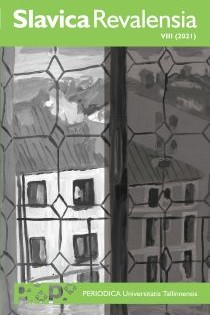Abstract
The article is aimed to trace some significant parallels between Nabokov’s Russian prose and drama, and a number of Soviet fantastical novels. A close reading reveals a whole network of allusions to Alexander Grin’s The Glittering World (Blistaiushchii mir, 1924) in Invitation to a Beheading (Priglashenie na kazn’, 1935—36), including the usage of the Romantic hero model, canonic female figures and gnostical imagery, originating from The Invisible Man by H. G. Wells. As for The Waltz Invention (Izobretenie Val’sa, 1938), the tragicomedy gives us compelling evidence that Nabokov deliberately wrote a parody on The Garin Death Ray (Giperboloid inzhenera Garina, 1926—27), a famous Soviet sci-fi novel by Alexey Tolstoy. In general, it can be said that Nabokov is scrupulously using implicit allusions and sophisticated wordplay on every level of his texts, widening the genre boundaries of science fiction, dystopia and adventure novel to invent a new literary strategy and new genres of his own.

This work is licensed under a Creative Commons Attribution-ShareAlike 4.0 International License.
Copyright (c) 2021 Slavica Revalensia
